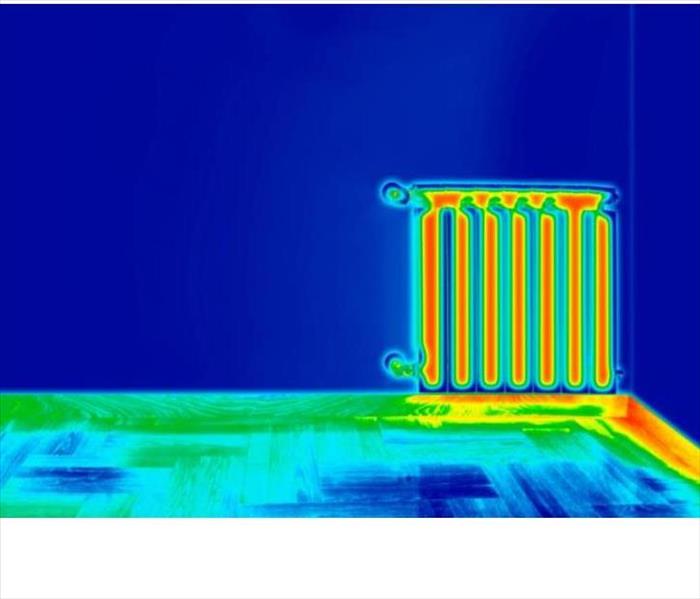IR Cameras- How to use them Properly, Ethically, and with Profitability
12/4/2017 (Permalink)
Infrared Cameras:
How to use them properly, ethically and profitably when performing water damage restoration.
Everyone has heard the old adage, “When you only have a hammer, all your problems start to look like nails.” With an infrared camera, everything can look like water damage.
SERVPRO of East Brownsville & South Padre Island realizes that IR camera technology can be a powerful tool for discovering the source of a leak, determining if there is latent moisture behind a wall after a dry-out and even to combat the potential for mold growth throughout a property.
On the other hand, if improperly used, an IR camera can be the cause of needless additional restoration work that won’t be covered by insurance providers.
And while an ethically-motivated restoration professional isn’t intentionally aiming to create a fear-based decisions in the mind of a property owner, it may not be viewed that way from their side, resulting in — minimally — a loss of trust and — at worst — a costly lawsuit.
What do they actually do?
There is a lot of confusion surrounding what infrared cameras actually do. To avoid issues resulting from this confusion, IR camera technology needs to be fully understood.
First and foremost, it must be made clear that thermal technology does not detect moisture at all. IR cameras detect temperature, display it visually, and that’s it.
An IR camera is no more capable of determining if something is wet than a mercury thermometer is when dropped in a cup of water. They do not “know” if things are wet, but they can easily measure temperature differentials, and water is extremely sensitive to these fluctuations.
Further, a home with water damage can reach a temperature equilibrium even after a water extraction has been performed. When this happens, if soaked drywall or carpet is the same temperature as the air around it, the IR camera won’t be able to “see” a temperature difference between the materials and the air.
This situation can easily be fixed by turning on the air conditioner, or even opening up a door to let in a draft. Actions like this will instantly affect the temperature of the air. These differences are then visible where evaporation is affecting the wet versus the dry sections of the home.
IR camera best practices
Beyond the technical limitations of the IR camera, there are also ethical implications for its use that should be addressed.
Due to the fact that an IR camera uses temperature and not actual moisture levels to determine if something is wet or not, less reputable restoration specialists might be tempted to take advantage of customers by using the visuals the camera provides.
Readouts near walls with cold water lines and air conditioning ductwork can create the impression that an area is water damaged when, in fact, it is only thermally cooler than its surroundings.
If used improperly or even unethically, this visual feedback from the camera can coax homeowners into further work than is actually required. Use of the camera in this manner is not only disreputable, but it’s also a lawsuit in the making.
That being said, when it comes down to selling yourself as an expert in the restoration industry, an IR camera and the visuals it provides can demonstrate to a homeowner, business owner or anyone you are working with on a loss that the added level of technology is an indication of true professionalism.
A heightened skill set, even if it’s only the perception of one technologically, can make a huge difference when trying to lock down a restoration project with clients.
Savvy homeowners won’t want to risk losing the services of an expert when they know they have a problem, and the IR camera may just make all the difference in illuminating this for them.
If used properly and ethically, the thermal photography that an IR camera produces can be an incredible tool for all aspects of a water damage loss.
But remember that it is still a tool, and should always be used in concert with other tools, such as moisture meters and testing, to ensure that not everything looks wet with water damage.
SERVPRO of East Brownsville & South Padre Island incorporates the use of IR Cameras on its water losses but backs up the findings with moisture meters. Our technicians are trained in the correct use of the IR Camera and know its limitations. Because of this, we verify our findings with meters and make sure we have all our equipment calibrated and functional at all times.






 24/7 Emergency Service
24/7 Emergency Service
